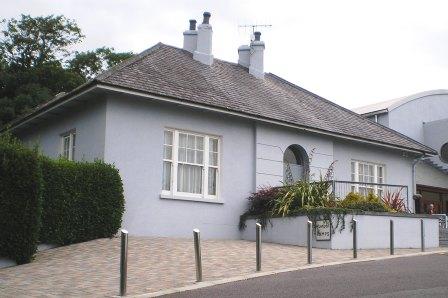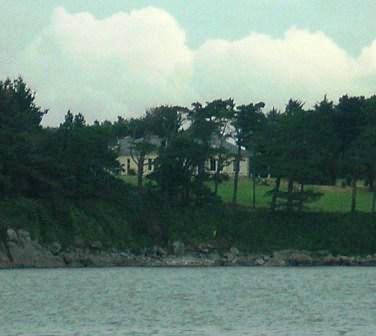Kent Lodge
Houses within 5km of this house
Displaying 15 houses.
Houses within 5km of Kent Lodge
Displaying 15 houses.
| House name | Description | |
|---|---|---|
| Mount St. Annagh | St. John Mason was leasing this property to Johanna O'Connor at the time of Griffith's Valuation, when the house, valued at £3 10s, stood on 800 acres. Johanna O'Connor was one of the principal lessors in the parish of Annagh at that time. The original house is no longer extant. | |
| Lohercannon House | Catherine Day was leasing this property to Richard Murphy at the time of Griffith's Valuation when it was valued at £15. In 1786 Wilson refers to "Lower-cannon" as "formerly the seat of Rev. Mr. Day, accidentally destroyed by fire". The Ordnance Survey Name Books describe it as the seat of Edward Orpen but originally built by the Day family. Lohercannan is referred to in the Irish Tourist Association Survey of the 1940s as "another building that would be worht a visit".The second house also seems to have been held by the Days but leased out to other families including the Morrises and Eagers. It was demolished to make way for housing in the 1960s. | |
| Ballyroe Lodge | Sir Edward Denny was leasing this property to Pierce Chute at the time of Griffith's Valuation when it was valued at £17 15s. Bary writes that it was built by Pierce Chute, possibly in 1836, according to O'Donovan. The Chutes continued in residence until the late nineteenth century after which it had a succession of owners. It now forms part of the Ballyroe Heights Hotel complex. |

|
| Listrim House | Sir Edward Denny was leasing Listrim House to Robert Fortune at the time of Griffith's Valuation, when it was valued at £12 10s. In the 1830s the Ordnance Survey Name Books record that it was the residence of Henry Oliver by whom it was supposedly erected in 1836. It is now a ruin. | |
| Lisadale Lodge | John Busteed was leasing Lisadale Lodge from William Howard at the time of Griffith's Valuation, when it was valued at £6 10s. The Ordnance Survey Name Books record it as the residence of William Howard, by whom it was supposedly built, in 1836. Bary writes that the house may have been a hunting lodge. It is now ruinous. | |
| Ballygarran House | Sir Edward Denny was the lessor of Ballygarran at the time of Griffith's Valuation, when the property, valued at £9 10s, was vacant. In the 1830s, the Ordnance Survey Field Name Books mention Ballygarran House as the residence of William Hilliard by whose family it had been built in the eighteenth century. It is described as " an oblong low thatched house". Bary notes that it was a house frequently associated with the Hilliard and later the Fitzmaurice families. It was demolished in the mid-twentieth century. | |
| Lassinah | John Day Stokes was leasing this property from Sir Edward Denny at the time of Griffith's Valuation, when it was valued at £20 10s. Bary states that Major Stokes retired here from his Indian Army post and renovated the house where he lived until 1862. It remained in the Stokes family until the end of the nineteenth century and was recorded by Slater as the seat of Maj. Oliver R. Stokes in 1894. It is still extant but ruined. | |
| Church Hill House | At the time of Griffith's Valuation, Rev. Henry Denny was leasing Church Hill from Sir Edward Denny when it was valued at £27. According to Bary the house was in the hands of the Denny family for much of the eighteenth and nineteenth centuries until it passed to the Neligans, possibly in the 1880s. In 1906 it was owned by William Neligan and valued at £27. It is still extant and occupied. |

|
| Plover Hill House | Sir Edward Denny was leasing this property to George Gunn at the time of Griffith's Valuaton, when it was valued at £16 5s. Lewis records it as the seat of George Gun in 1837. Bary states that the house was built in the early nineteenth century by Barry-William Gun, whose mother was Arabella Denny. The Gunn family continued to own the property until the 1880s. Buildings still exist at the site. | |
| Frogmore | John McCartie or McCarthy was leasing this property from Sir Edward Denny at the time of Griffith's Valuation, when it was valued at £16. Lewis records Frogmore Lodge as the seat of Reverend Barry Denny in 1837.The Ordnance Survey Name Books reported that it was built by him in 1828 at a cost of £600 and was lived in, in 1840, by Mrs. Townsend Gunn. It is still extant. | |
| Curragh | William John Neligan was leasing this property from the Denny estate at the time of Griffith's Valuation, when it was valued at £8 10s. Bary indicates that the house has always been occupied by merchant families from Tralee. It is still extant. | |
| Keel House | Edward Rae was in possession of Keel House at the time of Griffith's Valuation. Lewis records it as the seat of Giles Rae in 1837. Bary states this was originally a Langford House, possibly built as far back as the 1680s but with later modificiations. Wilson refers to it as the seat of Mr. Langford in 1786. It passed by marriage to the Rae family with whom it remained until the twentieth century. It was sold but later re-purchased by the family and is still extant. |

|
| Fenit House or Fenit Lodge | Though this house was mostly associated with the Hurley family, at the time of Griffith's Valuation, it was in the possession of a Miss Locke, when it was valued at £20. It was being leased by John Murray. In 1906 it was owned by John C. Hurley and valued at £33. Bary notes that it later came into the Fuller family through marriage. It was sold in the 1970s but is still extant and occupied. |

|
| Oyster Hall | Edward Denny was leasing this property to William J. Neligan at the time of Griffith's Valuation, when it was valued at £18 Lewis refers to it as the seat of Barry Collins while Oyster Lodge was the residence of Mr.Neligan in 1837. IIn the 1830s, the Ordnance Survey Field Name Books mention Oyster Hall as the seat of Daniel Supple but originally built by George Rowan in 1804. In 1814, Leet refers to Oyster Hall as the residence of George Rowan. Bary states that Oyster Hall was orginally built by the Rowans but was associated with the Neligans by the middle of the nineteenth century. It is no longer extant. | |
| Mount Hawk | In 1906 Mounthawk was owned by Elizabeth Stokes and valued at £18 5s. The townland was in the possession of George Stokes at the time of Griffith's Valuation. Bary states that it was built by George Stokes on lands purchased from the McCarthy family and remained in the Stokes family well into the twentieth century. It was later used as a clubhouse by Tralee Golf Club. |

